Bottled and Jarred Packaged Goods – Type & Benefits
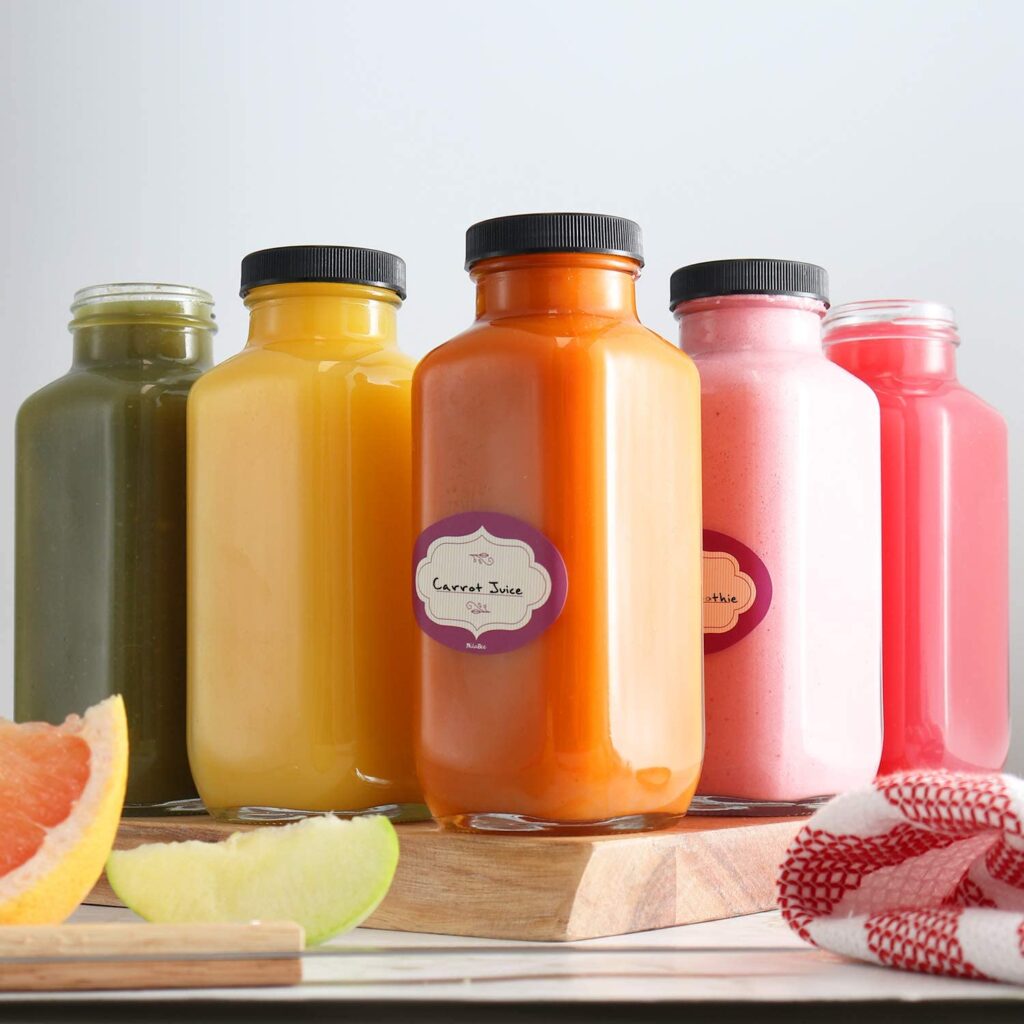
Notice: Undefined index: blockId in /home/duarindp/public_html/wp-content/plugins/table-of-contents-block/table-of-contents-block.php on line 159
Bottled and jarred packaged goods have always been the preferred choice of Asian and middle east countries to store goods. Let’s find out why is it worth buying.
- Bottled and jarred packaged goods have always been the preferred choice of Asian and middle east countries to store goods. Let’s find out why is it worth buying.
- Why Bottled and jarred packaged goods are in demand?
- Pros of Bottled and Jarred Packaged Goods
- Cons of Bottled and Jarred Packaged Goods
- Types of bottled and jarred goods
- Buying Guide for Bottles and jars to pack goods
- Where can you buy it?
- Conclusion
In ancient times people used to prepare foods like pickles, homemade jam, etc to keep it eatable for a long time, and for that, they used to use bottled and jarred packaged goods. Those were the time when the raw material to make this bottle and jar was clay. It has been found that countries like Egypt, India, middle east were the prominent consumers of these bottled and jarred packed goods.
However, with evaluation in technology bottles and jars made from steel, plastic, glass took the place of clay. Though, in the 21st-century people have become more conscious about their health and hygiene because processed and junk food has become part of our life.
In urban areas people who have no time to cook mostly prefer to prepare food in advance and store it somewhere to keep it edible for a long time.
There are a plethora of options to store foods like plastic containers, paper bags but it has some detrimental effects on the health if used for a long time and that is why people are returning to ancient bottled and jarred packaged goods.
Why Bottled and jarred packaged goods are in demand?
To store foods and beverages plastic and paper bags are widely in use but containers made from plastics and polythene bags have diverse effects on the environment and the human body. Moreover, products made from paper are still a good option but it increases the fear of forest logging.
To overcome these issues, people are now adapting ancient-style bottled and jarred package goods. Bottles and jars made from clay, glass, steel have zero or minimal effect on the environment and human body.
Even research says utensils made from copper have amusing advantages for the overall health of the body. Also, people living in metro cities have started using bottles, jugs, etc of copper.
Now, let’s move on to see the advantages and disadvantages of bottled and Jarred packaged goods.
Pros of Bottled and Jarred Packaged Goods
1. Storage
Manufacturers can get a lot of benefits from bottled and jarred packaged goods because it looks good and can experiment with their size and shape. A variety of products can easily attract potential consumers. Furthermore, bottles and jars with different storage capacities help people to store more things at ease.
2. Hygeine
People have become so health-conscious nowadays to avoid unexpected illnesses. To do that hygiene has become the foremost priority for humans. Bottled and jarred packaged goods facilitate the storage of food and stuff in the most hygienic manner. The material used in the manufacturing of these jars and bottles is food graded also it has characteristics like spillproof, air-tight lead to saving food stored inside from the outer environment.
3. Eco-Friendly
Bottles and jars made from glass, clay, and steel are the first choices of consumers. It does serve both the purpose of humans, it looks good in kitchen and environment friendly too. Buyers are avoiding plastic-made product which is not disposable and adapting eco-friendly materials for bottles and jarred packaged goods.
Cons of Bottled and Jarred Packaged Goods
1. Environment
Most packaging will have a negative impact on the environment since it contains chemicals and will have a major impact on the reproductive system. The majority of packaging is not biodegradable and is detrimental to both humans and animals.
2. Cost
It is not incorrect to state that packing raises the cost of packed products. When compared to other packaging items, the storage, and transportation of bottled and jarred packaged products appear to be particularly expensive.
3. Availability
As we see how people are keen to buy these types of products and due to this demand has increased in the market. To manufacture this type of product raw materials are the essential thing and to avail this all the time is cumbersome. Manufacturers have to import some raw materials from overseas and as a result, it increases the cost and sometimes creates a lack of availability.
Also Read This - 5 Best Food Storage Container
Types of bottled and jarred goods
There are various types of variations and products available in the market but here we have mentioned some of the most popular and most liked items that consumers are liking and prefer to buy.
- Aluminum containers
- Wooden containers
- Glass containers
- Metal containers
- Cardboard packaging
- Plastic bottles
1. Aluminum containers
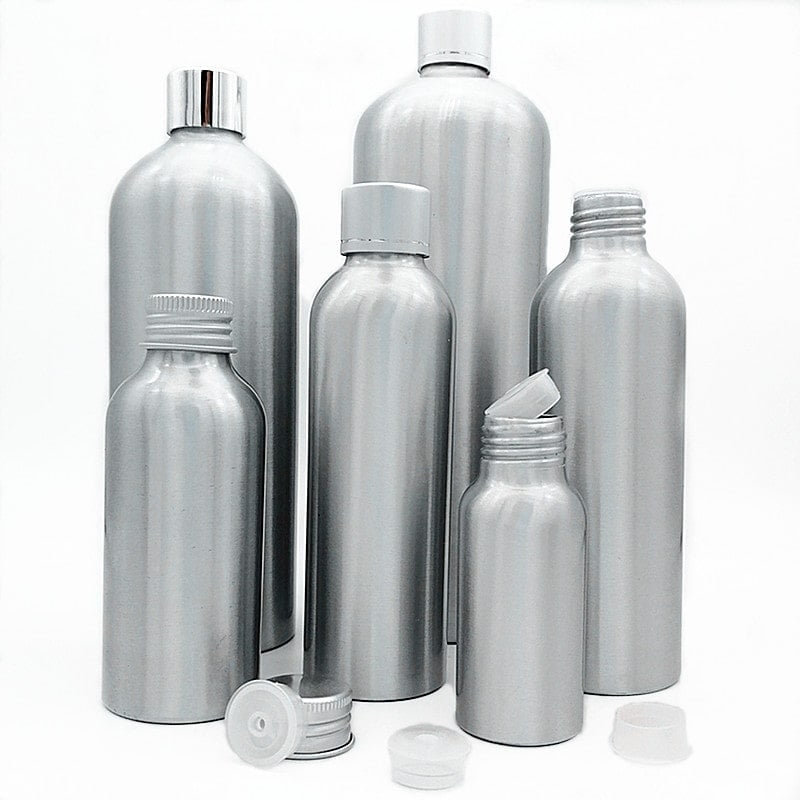
These containers are indeed the first choice of everyone because of their use cases. It is easy to manufacture and it can be recycled later also. Raw material to make this product can be found easily anywhere and as a result, people can buy this at very affordable prices.
Usecase: water bottle, cartels, tiffin boxes, storage containers.
Advantages:
- Raw materials can be available easily
- Eco-friendly because it can be recycled
- Affordable
- Durable, incurable, pocket friendly.
Disadvantages:
- can deteriorate or deform during handling
- Liquids can cause the internal material to deteriorate
2. Wooden containers
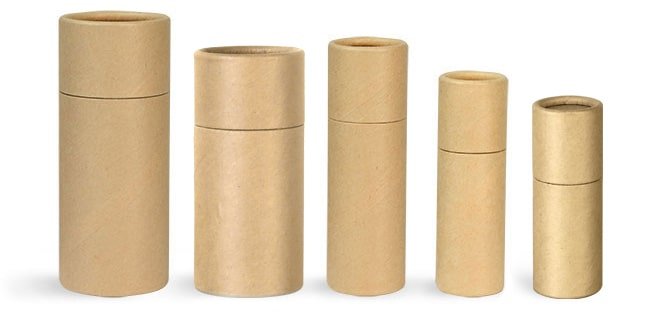
It is an extremely durable and well-preserved substance. Wood is commonly used to pack liquids such as oil, beer, wine and others. According to experts, this material is suitable for this type of product because it keeps the taste and quality much better. Likewise, fruits and vegetables can be packaged in wooden boxes, the same way gourmet products are presented. Compared to other forms of packaging, wood takes up more storage space and can be quite expensive.
Usecase: store vegetables, fruits, gourmet products.
Advantages:
- Durable and can preserve substance delicately.
- Keep content packed inside fresh.
- Looks eye-catchy and glorious.
Disadvantages:
- Overconsumption can lead to forest logging.
- Not eco-friendly because it can not be recycled.
- Could be expensive.
3. Glass containers

Glass containers have two benefits: they never corrode and are gas-tight. This type of container has no additives, making it more ecologically friendly, and owing to its high-temperature tolerance, it can also be reused. It may be cleaned and sanitized to make it last longer as packaging, and it can also be recycled. You may talk about the price, as glass containers are much more expensive. Beer and jam are two prominent examples of meals or things packaged in this manner.
Usecase: store grocery, liquid, pickle, beer, jam.
Advantages:
- Air-tight and temperature tolerant.
- Eco-friendly because of its recycling property.
- Content inside can last long.
Disadvantages:
- Not suitable for the commute.
- A bit costly than others.
4. Metal containers
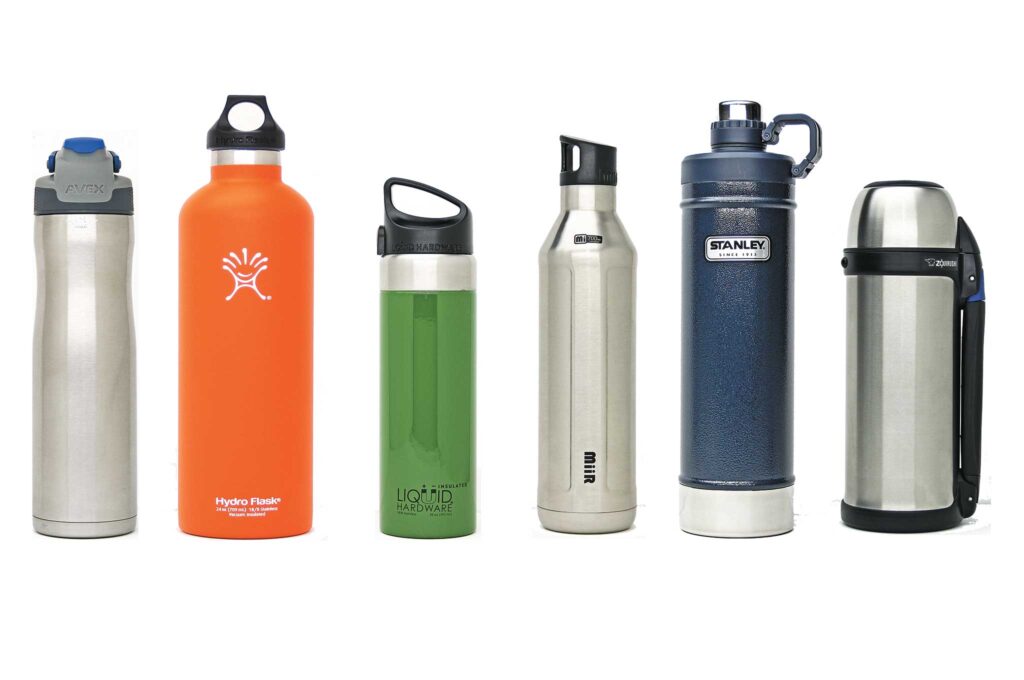
The container can have a hermetic closure because of the metal, which assists in the preservation of the food over time. Metal is frequently used for canned meals since these containers provide excellent protection for the goods. The can is the most popular metal packaging shape, and it may be used to store a wide range of commodities including fish, fruits, vegetables, and patés. Metal containers are difficult to store, and some metal containers, such as steel, are prone to corrosion, which leads to metal deterioration.
Advantages:
- Works as a good preservative.
- Durable and protective.
- Extensive storage capacity.
Disadvantages:
- Heavyweight due to metal.
- Over-demand can lead to metal deterioration.
- Affordable and easy manufacturing process.
5. Cardboard packaging
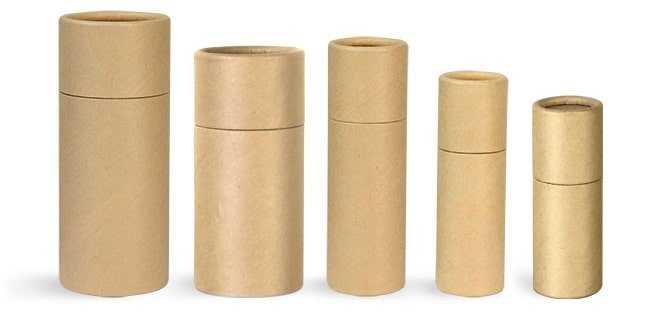
Two of the most essential characteristics of cardboard, which is also completely recyclable, are its lightness and sturdiness. It is frequently used to store, present, and ship food and can be moulded to fit any form. Takeaway dinners, fruit and vegetable boxes, nut tubs, condiment tubes, and frozen food boxes all contain them. Because cardboard is permeable, it requires the help of another material to keep food fresh. Moisture and water are readily transported to its contents since it is a highly absorbent material.
Advantages:
- Lightweight and recyclable.
- Modular and permeable.
- Available at cheap price
Disadvantages:
- Not suitable to carry heavyweight inside.
- Made from highly absorbing material.
- High demand can lead to forest deterioration
6. Plastic Bottles

It’s used in a wide range of meals and can be altered to match practically any design because it’s such a versatile material. As a consequence, it might be customized to the specific product that needs to be protected. Plastic is a heat-sensitive material that rapidly absorbs food odors and flavors. The most serious disadvantage is its influence on the environment: plastic is not a biodegradable material, and while it may be recycled, it cannot be used for human consumption once recycled. Two examples are cheese containers and yogurt cups.
Advantages:
- Available at a cheap price.
- Design can be altered according to needs.
- Raw materials are easily available
Disadvantages:
- Not biodegradable
- Not recommended to store food due to its heat-sensitive material.
- Not eco-friendly and hazardous for the environment.
Buying Guide for Bottles and jars to pack goods
Things that must be considered before buying jars and packaged goods are quite simple. Consumers must consider 5-6 things before purchasing jars and packaging materials. You must ask yourself these questions
- What do you want to store?
- What is your budget?
- For how much time do you want to store?
- What type of material do you want to be stored?
- Do you want the material to be transported somewhere or not?
Write down answers to these things then decide to purchase anything. Overall, we have mentioned general things that are must be taken care of.
Let’s what are those criteria.
1. Material
Firstly, you have decided what you want to store so now it’s time for you to decide the material of it. Suppose you want to store water that stays hot or cool for a long time then it is better to go for bottles made of metal or aluminum. Similarly, for a kitchen to store lentils, jaggery, sugar, or flour then go for a budget option like plastic jars or aluminum storage. Always try to buy durable, environment-friendly, and affordable things.
2. Cost
Cost is the second most important thing to be considered. If the thing that is going to be stored are expensive then always go for the strong and little costly material but for daily storage like kitchen, clothes, or home improvement you can settle for affordable things.
3. Environment friendly
Always try to go for eco-friendly products that are recyclable and bio gradable. There are a number of options available in the market that are cheap but hazardous for the environment so pay little more if possible to save the environment. Make sure you choose a plastic product that is recyclable and not harmful to your own health.
Where can you buy it?
To buy bottled and jarred packaged goods there are many platforms you can choose to but it depends on which country you live in. Here we have listed some of the big e-commerce websites from where you can buy them.
from whatever country you belong just visit the website and in the search bar you can search terms as given below.
- Aluminium bottles
- cardboard boxes
- wooden bottles and boxes
- glass jars
- plastic bottles
- packaging material
Buy bottled and jarred packaged goods in india
Buy in United States
Buy in other countries
To buy in other countries like Taiwan, Spain, Mexico, Brazil, Vietnam, Germany, Thailand, Italy, Turkey, Philippines, united kingdom, etc. You can visit Alibaba or any other drop shipping websites to buy your favorite bottled and jarred packaged goods.
Conclusion
That’s it, we have explained everything possible regarding bottled and jarred packaged goods. Hope you are clear with the type of jars and packaging products available in the market and buying guide for it.




Higher Quality, Smaller Container: Jars and bottles are generally placed on large or big display shelves. However, there are instances where the consumers cannot locate a small container that can house the goods they are purchasing. Therefore, it is essential to ensure that you are opting for a good quality shelf-lifter if you opt for this option.